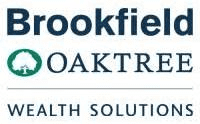Brookfield Infrastructure Income Fund Inc. (BIIF)
Score
3.5
- ClassS
- Managed byBrookfield Asset Management Private Institutional Capital Adviser (Canada), L.P.
- Release dateSeptember 23, 2025
- UpdatedSeptember 23, 2025
Net Asset Value
$4.3B(July, 2025)
Max. Offering Size
UnlimitedInvestment Style
Private infra equity & debt + listed infrastructureHQ Location
New York, NYAmount Raised
Not specifiedLegal Construction
Maryland corporationAsset Class
InfrastructureInception
November, 2023Eligibility
U.S. investorsMin. Investment
$2,500 initial; $500 subsequentAnnualized Distribution Rate
3.40%Net Total Return
7.28% annualizedDistributions
MonthlyIncentive Fee
0.44% annuallyAnnual Management Fee
1.25%Holding Period
Quarterly tenders(up to 5% NAV); no secondary liquidity
Advisor
Brookfield Asset ManagementDealer Manager
Quasar Distributors, LLCAuditor
Deloitte & Touche LLPCounsel
In-house legal(Scott Selig, VP Legal)
The Bottom Line
Brookfield Infrastructure Income Fund promises access to $258 billion in infrastructure assets with solid 7.38% annualized returns since inception and monthly distributions of $0.0375 per share, but here's what they don't highlight upfront: you're paying up to 3.72% sales loads plus ongoing fees while locked into quarterly tender offers that limit your liquidity, all while underperforming the S&P 500 over just 1.75 years. The infrastructure theme sounds compelling until you realize you're getting exposure to the same sectors that struggled during rising rate environments while giving up daily liquidity.
The real story? While Brookfield beat bonds, cash, and gold modestly, it significantly underperformed both stocks and REITs during a favorable market period for infrastructure assets. For millennials building wealth, this represents a defensive real asset allocation that provides steady income but at the cost of missing substantial growth during your prime earning years when compound returns matter most.
Your Money vs. Reality
Period Analyzed: December 2023 - September 2025 (Class S inception to present)
Notes on Period: Analysis covers 1.75-year period from Class S availability (December 1, 2023) through September 2025. Performance reflects strong operational results with consistent monthly positive returns but lagged public market alternatives during favorable conditions.
Index Sources: FTSE Nareit All REITs Index; Vanguard Prime Money Market Fund (VMFXX); 10-Year Treasury constant maturity; S&P 500 Total Return Index; SPDR Gold Trust (GLD).
Key Takeaways: Brookfield Infrastructure significantly underperformed both stocks and REITs during a period when infrastructure assets should have benefited from renewed focus on AI infrastructure and energy transition investments.
Fund Strategy
Invests in private infrastructure equity and debt alongside public listed infrastructure securities. Seeks to provide income-oriented exposure with monthly distributions and diversification across renewables, utilities, transport, midstream, and digital assets, structured as an interval/tender offer fund.
Fit Check
Available to: U.S. investors (Class S minimum: $2,500) :
Ideal For:
- Investors seeking income-generating infrastructure exposure with monthly distributions.
- Those comfortable with quarterly tender liquidity as a bond alternative or defensive allocation.
Less Ideal For:
- Investors needing daily liquidity or preferring growth-only strategies.
- Fee-sensitive investors or those who prefer liquid infrastructure ETFs for simplicity.
Fast Facts
Key Concern
What It Means for You
Significant Underperformance vs Growth Assets
Missed big gains in S&P 500 during favorable market period.
Up to 3.72% Sales Loads
High upfront fees immediately reduce investment capital.
Quarterly Tender Offer Limitations
Limited liquidity access during market stress periods.
Limited 1.75-Year Track Record
Insufficient performance history across market cycles.
Pros/Bulls Say
- Institutional infrastructure access made retail-friendly: Brookfield’s $258B global infra platform (renewables, transport, data centers, utilities) is available with a $2,500 entry minimum, monthly distributions, and quarterly liquidity versus decade-long private fund lockups.
- Defensive essential services exposure: ~90% of revenues are contracted or regulated, and ~75% of the portfolio includes inflation-linked escalators — offering stability in downturns and inflationary environments.
- Steady income performance: Posted +8.18% returns in 2024, alongside reliable monthly distributions of $0.0375/share, delivering ongoing cash flow for income-seeking investors.
Cons/Bears Say
- Opportunity cost in growth markets: Underperformed equity benchmarks (e.g., S&P 500) while charging hefty loads and fees — leaving investors paying more to underperform during strong bull cycles.
- Liquidity risks when most needed: Quarterly tender offers are capped at 5% NAV and subject to Board discretion, meaning access could be cut off in stressed infrastructure markets.
- Rate sensitivity remains high: Despite inflation hedges, infrastructure valuations remain vulnerable to rising interest rates and higher financing costs, especially for debt-heavy projects.
Verdict
3.5/5 — Brookfield Infrastructure Income Fund delivers retail investors a rare gateway to institutional-quality infra assets with consistent monthly distributions and inflation protection. Fees, capped liquidity, and interest-rate sensitivity, however, make it best for income-oriented defensive allocations, not aggressive growth.
Fees & Expenses
Fee Type
Why It Matters
How Calculated
Typical Amount
Fee Impact Example:
On a $10,000 investment:
- You’d pay $372 upfront in sales charges, plus ~$210 annually in ongoing fees.
- Over a decade, this could total ~$2,500 in costs, reducing your effective returns by ~35–40% compared to low-cost public infrastructure ETFs.
Portfolio Snapshot
Asset Allocation
Sector Diversification
Geographic Allocation
Overview
ALIGNMENT: Average
- Management’s fee structure creates some alignment through a monthly income focus, but upfront sales loads up to 3.72% favor brokers and management over investors, requiring ongoing outperformance to justify total costs.
- The tender offer structure offers quarterly liquidity, yet competitiveness and fee pressure are reduced compared to daily funds; Brookfield’s large institutional platform supports long-term incentives but does not eliminate conflicts from layered fees.
Performance: Above Average
- 7.38% returns since inception trail public markets and REITs, reflecting modest results during a period of strong infrastructure tailwinds—returns rely heavily on sustained cash generation from private assets.
- Limited operating track record and concentration in renewables and data infrastructure increase vulnerability to regulatory, market, or technological disruptions; monthly distributions may face pressure from rising costs or changing demand.
Market Risk: High
- Portfolio is sensitive to rising rates, reducing valuations and increasing financing costs for capital projects, while downturns impact asset utilization and revenues from tolls, energy, or data centers.
- Environmental, technological, and geopolitical factors—such as climate regulation and trade disputes—can hit utility and international assets, compounding risk in concentrated sectors.
Business Risk: Above Average
- Team benefits from Brookfield’s experience and global access, but quarterly liquidity with illiquid private assets creates operational risk in managing redemption flows and sourcing quality deals amid growing competition.
- Regulatory uncertainty surrounding infrastructure taxation, compliance, or market access may impact multiple holdings; a small management team poses key person risk during critical transitions.
Debt Risk: Above Average
- Infrastructure investments use significant leverage at both the asset and fund level, increasing vulnerability as maturing low-rate debt encounters higher refinancing costs and lower cash flows.
- Currency risk from international exposure and unanticipated costs, such as environmental remediation, could drive up debt and capital needs, amplifying downside risk.
Liquidity Risk: Above Average
- Shareholder liquidity is restricted by quarterly tenders and 5% caps, with board discretion to suspend access during stress, leading to delayed or denied capital access for urgent investor needs.
- Private infrastructure holdings are hard to sell quickly; extreme market conditions could force discounted sales of liquid assets or extend illiquidity for months.
Transparency: Average
- Investors get quarterly portfolio updates and monthly NAVs, but asset-level valuation relies on appraisals and management estimates that may not capture challenges until fully realized.
- Disclosure on which assets, sectors, or deals drive results remains limited, making overall portfolio attribution and forward-looking risks difficult to assess.
Manager Insights

Sam Pollock
Portfolio ManagerExperience & Highlights: 15+ years Brookfield; Managing Director; Covers infrastructure debt and equity investments globally; Focus on North American infrastructure assets; Former investment banking experience
Education: Bachelor of Commerce degree from Queen’s University and is a CPA.

Chloe Berry
Managing PartnerExperience & Highlights: President of several Brookfield investment companies; General Counsel of Brookfield Asset Management Private Institutional Capital Adviser; Managing Partner since 2016.
Education: Bachelor of Science degree from McGill University.
Peer Comparison
Disclaimer
All Rights Reserved. The data and analyses contained herein are the property of Noyack and are protected by copyright and other intellectual property laws. The information provided is intended solely for informational purposes and should not be construed as investment advice. It is not an offer to buy or sell a security, and it is not intended to be used as the sole basis for any investment decision. The information contained in this document is believed to be accurate and reliable based on sources believed to be reliable, but Noyack makes no representation or warranty, express or implied, as to its completeness, accuracy, or timeliness. The data and analyses are subject to change without notice and Noyack is not obligated to update this information. The use of the information contained in this document is at the sole risk of the reader, and Noyack shall not be responsible for any losses, damages, or expenses incurred by any person as a result of reliance on the information contained herein. Noyack does not endorse or approve any investment or trading strategy and does not guarantee any specific outcome or profit. The reader should always conduct their own independent analysis and consult with a qualified financial advisor before making any investment decisions. This document may contain forward-looking statements and projections which are subject to risks and uncertainties, and actual results may differ materially. Past performance is not indicative of future results. This document is not intended for distribution to, or use by, any person or entity in any jurisdiction or country where such distribution or use would be contrary to local law or regulation. Noyack reserves the right to modify or discontinue the provision of the information contained in this document, in whole or in part, at any time and without notice. The information contained in this document is provided “as is” and Noyack makes no representation or warranty of any kind, express or implied, as to the accuracy, timeliness, completeness, merchantability or fitness for any particular purpose of the information contained in this document. Noyack shall not be liable for any errors or omissions contained in this document or for any damages whatsoever arising out of or in connection with the use of this document.




